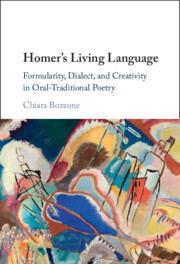Refine search
Actions for selected content:
84 results
6 - Narrative voice
-
- Book:
- The Prompts You Need to Help You Write the Book You Want to Write
- Published online:
- 25 October 2025
- Print publication:
- 06 November 2025, pp 76-83
-
- Chapter
- Export citation
15 - Language Use in Chaucer’s Canterbury Tales
- from Part II - Lighthouse Works and Authors
-
-
- Book:
- The New Cambridge History of the English Language
- Published online:
- 18 October 2025
- Print publication:
- 16 October 2025, pp 371-384
-
- Chapter
- Export citation
Chapter 4 - Nineteenth-Century American Realism
- from Part I - The Realist Novel
-
-
- Book:
- Realism and the Novel
- Published online:
- 05 June 2025
- Print publication:
- 19 June 2025, pp 56-70
-
- Chapter
- Export citation
Chapter 18 - Realism and African American Fiction
- from Part IV - Locations of Realism
-
-
- Book:
- Realism and the Novel
- Published online:
- 05 June 2025
- Print publication:
- 19 June 2025, pp 259-271
-
- Chapter
- Export citation
Chapter 1 - English Sociolinguistics: Why It Matters
-
- Book:
- English Sociolinguistics
- Published online:
- 01 May 2025
- Print publication:
- 15 May 2025, pp 1-19
-
- Chapter
- Export citation
19 - Constructions and Lectal Variation
- from Part V - Constructions in Sociocultural and Typological Variation
-
-
- Book:
- The Cambridge Handbook of Construction Grammar
- Published online:
- 30 January 2025
- Print publication:
- 06 February 2025, pp 497-518
-
- Chapter
- Export citation
Chapter 26 - Language
- from Part VI - Form, Genre, and Poetics
-
-
- Book:
- Gerard Manley Hopkins in Context
- Published online:
- 16 January 2025
- Print publication:
- 16 January 2025, pp 228-235
-
- Chapter
- Export citation
Chapter 4 - Northern England
- from Part I - Places
-
-
- Book:
- Gerard Manley Hopkins in Context
- Published online:
- 16 January 2025
- Print publication:
- 16 January 2025, pp 32-39
-
- Chapter
- Export citation
4 - Conceptualizing Translanguaging in Black Immigrant Literacies
-
- Book:
- Literacies of Migration
- Published online:
- 30 November 2024
- Print publication:
- 21 November 2024, pp 108-132
-
- Chapter
- Export citation
9 - Insular Varieties of English in Britain
- from Part I - English
-
-
- Book:
- Language in Britain and Ireland
- Published online:
- 17 October 2024
- Print publication:
- 31 October 2024, pp 249-257
-
- Chapter
- Export citation
17 - Chinese
- from Part III - Multilingualism in Britain and Ireland: Minority Languages
-
-
- Book:
- Language in Britain and Ireland
- Published online:
- 17 October 2024
- Print publication:
- 31 October 2024, pp 402-412
-
- Chapter
- Export citation
9 - Insular Varieties of English in Britain
- from Part I - English
-
-
- Book:
- Language in Britain and Ireland
- Published online:
- 17 October 2024
- Print publication:
- 31 October 2024, pp 258-266
-
- Chapter
- Export citation
25 - ‘Non-standard’ English and Education
- from Part V - Applied Sociolinguistic Issues
-
-
- Book:
- Language in Britain and Ireland
- Published online:
- 17 October 2024
- Print publication:
- 31 October 2024, pp 543-567
-
- Chapter
- Export citation
Clausal Postpositioning in German Regional Language
-
- Journal:
- Journal of Germanic Linguistics / Volume 36 / Issue 3 / September 2024
- Published online by Cambridge University Press:
- 17 October 2024, pp. 157-207
-
- Article
- Export citation
‘When intuitions (don't) fail’: combining syntax and sociolinguistics in the analysis of Scots
-
- Journal:
- English Language & Linguistics / Volume 29 / Issue 1 / March 2025
- Published online by Cambridge University Press:
- 13 September 2024, pp. 1-34
-
- Article
-
- You have access
- Open access
- HTML
- Export citation
1 - What Are Heritage Languages and Why Should We Study Them?
-
- Book:
- Heritage Languages
- Published online:
- 09 July 2024
- Print publication:
- 27 June 2024, pp 1-19
-
- Chapter
- Export citation
Chapter 3 - Dialect
-
- Book:
- Homer's Living Language
- Published online:
- 11 April 2024
- Print publication:
- 18 April 2024, pp 130-193
-
- Chapter
- Export citation

Homer's Living Language
- Formularity, Dialect, and Creativity in Oral-Traditional Poetry
-
- Published online:
- 11 April 2024
- Print publication:
- 18 April 2024
20 - Foreign Infusion
- from Part III - Other Signs
-
- Book:
- Chinese Signs
- Published online:
- 29 February 2024
- Print publication:
- 07 March 2024, pp 189-200
-
- Chapter
- Export citation
19 - The Chinese Diaspora
- from Part III - Other Signs
-
- Book:
- Chinese Signs
- Published online:
- 29 February 2024
- Print publication:
- 07 March 2024, pp 177-188
-
- Chapter
- Export citation
